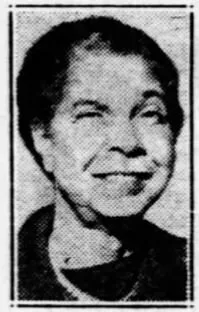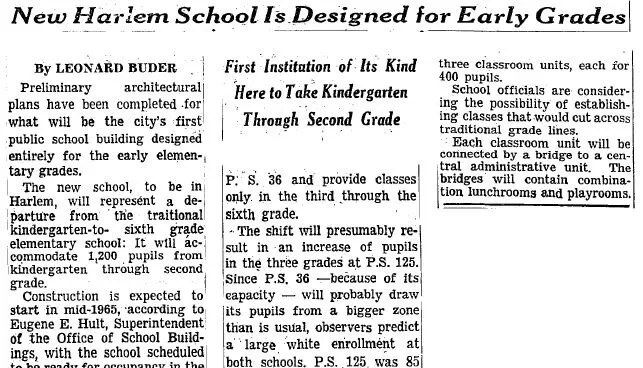Our Story
About Margaret Douglas
P.S. 36 was named in honor of Margaret Douglas (1901-1967) who was the third African American principal in NYC. She was the granddaughter of a slave, and grew up in Washington, DC. She won a four-year scholarship to Howard University, and graduated in 1922. She earned her Master’s degree from Teachers College, Columbia University in 1938, and took other courses at City College, Hunter, and New York University.
She started teaching at a Harlem elementary school, and became assistant principal at P.S. 10 in Harlem. In 1949, she was named principal of P.S.133 in Manhattan, only the third African American to become principal in the NYC school system. Her school was listed as “one of the best five in New York City” in 1957 by a survey by the state Department of Education. She then became principal at P.S. 129. In 1960, Ms. Douglas was the first African American woman assistant superintendent in the NYC school system and she was in charge of District 19 in Brooklyn. In 1967, she became the first African American woman deputy superintendent in charge of curriculum for the NYC school system. She worked for 44 years in the NYC school system.
Historic Location
P.S. 36 is located at the corner of Amsterdam Avenue and Morningside Drive. The location was once part of Morningside Park that extends down the hill behind the school. During the War of 1812, the army designed four forts on the top of the hill along the west side of the park in order to protect against a British invasion that they thought might happen. They built what were called blockhouses, which were large rectangular wood and brick structures that could be filled with cannons. There were four blockhouses along the park – Number 1 at 106th Street; Number 2 at 113th Street; Number 3 at 121st Street; and Number 4 at 123rd Street. The blockhouses were never actually used in battle. Blockhouse No. 4 eventually fell into ruin but was still part of the park.
In 1963, the city decided to build a new school in the Harlem area, and a goal was to create an integrated school in the mostly African American neighborhood. Construction of the new school was part of the mayor’s 1964 Morningside General Neighborhood Renewal Plan, which was a 10-year plan to tear down and rebuild housing, parks, police and fire, and post offices in most of the area from 104th Street to 125th Street.
The hope was that the new P.S. 36 school would be enroll students from nearby White and African American neighborhoods together. The state legislature and mayor supported the construction of a school on the north part of Morningside Park, where the ruins of Blockhouse 4 were. Many groups did not want to see the park built on to become a school, and the Municipal Art Commission argued that the ruins of Blockhouse No. 4 should be preserved for history. Eventually, the city approved the location, and the Board of Education was allowed to start building.
Construction on the building started in 1965 by an award-winning design company, Frederic Frost Jr. & Associates. The building is a type of design called Mid-Century Modern Brutalist architecture. This type of building usually looks like blocks, with straight lines, and is made of concrete. P.S. 36 has four main rectangular units that are joined by bridges. The Blockhouse No. 4 ruins were destroyed, but the builders left natural rock made of Manhattan Schist as a foundation.
First School of Its Kind
At the time, it was the first school in the city to be built for only early elementary grades, kindergarten through second grade. At the time, most elementary schools were for grades kindergarten through sixth grade. P.S. 36 was built as a partner school to nearby P.S. 125 to help enroll some early childhood students, since P.S. 125 was becoming too crowded. Instead of building two full schools so close together, P.S. 36 was designed for only the early grades. The designers didn’t include an auditorium or gymnasium because they didn’t think younger students would need them. They did include a lunchroom and play area in the central unit. It wasn’t until the 2010 school year that the school added one upper grade at a time. The 2011-2012 school year was the first year with students spanning pre-K through grade 5.
New York Times, October 29, 1964



